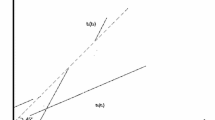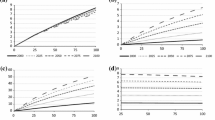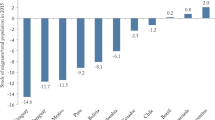Abstract.
This paper numerically simulates a two-country overlapping-generations model to study international labor migration when the two countries are characterized by different social-security systems. The present analysis extends previous work beyond steady-state considerations. The most striking result is that in all cases considered, dynamically efficient and inefficient economies in autarkic steady-state, migration leads to temporary welfare losses in both countries. In all cases, the transition path is characterized by temporary dynamic inefficiency in one country.
Similar content being viewed by others
Author information
Authors and Affiliations
Corresponding author
Additional information
All correspondence to Doris Geide-Stevenson. We would like to thank an anonymous referee for very helpful comments. We are responsible for any remaining errors. Responsible editor: Christoph M. Schmidt.
Rights and permissions
About this article
Cite this article
Geide-Stevenson, D., Ho, M. International labor migration and social security: Analysis of the transition path. J Popul Econ 17, 535–551 (2004). https://doi.org/10.1007/s00148-004-0202-5
Received:
Accepted:
Issue Date:
DOI: https://doi.org/10.1007/s00148-004-0202-5




